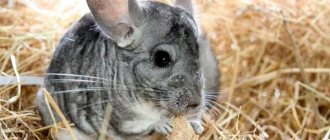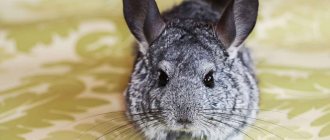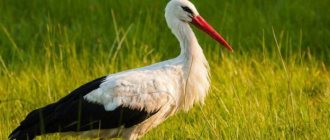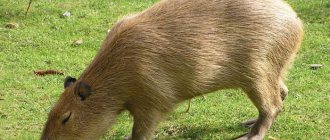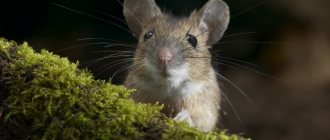The house mouse, or decorative mouse, is increasingly becoming the object of attention of people who are hesitant to buy a dog or cat. These are absolutely unpretentious animals with good adaptive qualities. They quickly become attached to their owners and never show aggression.
However, caring for pet mice has its own nuances. Therefore, before getting such a pet, it is recommended to learn more about the types, nature and features of caring for these rodents.
How to choose a pet
Keeping pet mice does not require special care. They are clean, get used to people quickly and have a friendly character.
When choosing an animal, take a closer look at its external characteristics and behavior. A healthy animal is characterized by the following appearance:
- the fur is smooth, without bald spots, not sticking out;
- an even row of white teeth;
- eyes are moist without mucus and shiny;
- The active animal has an excellent appetite.
Don't forget that rodents live up to 4 years, so take a 12 month old mouse.
Kinds
Many people believe that house mouse breeds are limited to only gray or white. But breeders have bred different types of pets that have curly, satin, long or short hair. The color also varies, which can be monotonous or multi-colored.
Mice colored in the colors of chinchilla, sable and other animals are not rare exceptions. In addition, it is worth mentioning a bald pet, which gives the future owner a wider choice.
Look at the sex of the mammal
You should definitely pay attention to this, because males do not get along with each other in the same cage. They are larger than their female relatives, with a pear-shaped body.
A male 30 days old already has testicles under his tail. In females, on the third day of birth, rudimentary nipples in the amount of 5 pairs are clearly visible.
The house mouse leads a collective lifestyle, so you should buy not just one individual, but several. If you plan to breed rodents, then keep the female and male sexes separate until mating.
How long do decorative mice live at home - life expectancy in captivity
Several factors influence the lifespan of a mouse. You can consider them in more detail:
- Regularity of eating - an ordinary mouse should eat 5 times a day, and at the same time its food should be balanced. Improper and insufficient nutrition can greatly undermine the health of a rodent.
- Reproduction - in the wild, it produces offspring about three times a year. More frequent pregnancies may have a negative impact on her life expectancy.
- Living conditions - despite the fact that mice are able to adapt to cold, heat and different areas, their life expectancy is still affected by climate. They have no protection from extreme heat or cold. The condition and presence of the shelter itself also matters.
In addition, in the wild, mice are subject to constant attacks from various predators, so in the wild rodents live no longer than three years.
Take care of the cage
- It is better to buy a large enclosure with 2-3 floors.
- It’s good if there are stairs in it - animals like to move by jumping. They will be happy to play with a small wheel and a tube.
- Mice love the process of bathing - setting up a small pool will greatly please them.
- It is permissible to use a transparent plastic box or an aquarium as a house.
How to maintain and care
Sawdust or paper, corn, or straw filler is poured into the bottom of the home. The litter is changed after 3 days. In the terrarium, it is advisable to equip shelters located at different height levels and put pieces of wood for grinding down teeth.
Rodents of all types are very active, running 40 km per day in the wild. The presence of a running wheel will benefit them. Water is supplied using a hanging drinker; an ordinary saucer will do.
Unfortunately, decorative mice are susceptible to colds or overheating. Do not place the terrarium near a window and protect it from direct rays of the sun and drafts. Maintain the temperature at +21 degrees.
Note!
Domestic hedgehog - a review of the best hedgehog breeds to keep, all the features of the pet from feeding to living conditions! + photos and videos
Domestic goat - an overview of the features of keeping goats, how to care for them and what to feed them, as well as diseases, treatment and prevention of diseases in the review!
Sheep - learn everything about keeping sheep, features of living conditions, diet and the main characteristics of sheep as a pet!
Contents: every mouse has its own hole
Each animal needs its own special space, which it will consider “its place” - sacred and inviolable. Therefore, before you bring mice home, you should take care of where they will live. It was before, not after. Because jars and cardboard boxes are absolutely not suitable for rodents. And any move is always stressful.
Avoid aquariums as well. They are cramped, stuffy, hot, the mouse will not be able to move normally in them and arrange a secluded corner for itself. The best solution would be a spacious cage with metal bars.
Rodent cage
Be sure to make it yourself or buy a small house - a hole where the mouse will spend all day long.
Add a wheel to provide your pet with physical activity and fulfill his need for movement. For the same purpose, take care of shelves, ladders and ropes. The animal will be happy to show you its dexterity, and you will also have fun watching its amusing movements.
Sawdust for rodents
Litter is a very important element. The layer should be quite impressive - at least 5 mm. Animals use it not only for its intended purpose, but also to decorate their house, and when there are drafts or low temperatures, they burrow into it to keep warm.
The material should be natural and preferably inexpensive: sawdust, dry peat crumbs, shavings, hay. Avoid cotton wool and sand - the first absorbs odors too well and gets tangled between your fingers, and the second can become a breeding ground for lice. But something tells us that you don’t want such neighbors.
Rodent nutrition
Mammals often suffer from obesity. Owners need to know what mice eat at home.
The diet mainly consists of wheat, barley, and corn grains. No need to grind them! For small mice, a teaspoon of food per day is enough. My favorite delicacy is sunflower and pumpkin seeds. They won’t refuse various nuts either.
Vegetable and fruit additives should be present in food. Feed green vegetables: cabbage, cucumbers, zucchini, parsley. From fruits, choose apples, bananas, pears. It is rarely forbidden to pamper your pets with pieces of bread and egg whites. But don’t stuff them with smoked meats, citrus fruits, and meat.
You can get by with ready-made balanced food from the pet store. In this case, you don’t have to think about what to feed your pet mice; the only thing is that natural products are already excluded.
General characteristics
A mouse is a small mammal with an elongated body, a pointed muzzle, and large oval ears.
The size of the animal can vary from five to twenty centimeters, the body length depends on the species; large artificial breeds are called decorative breeds.
A distinctive feature of mice is their long flexible tail, which has no hair or is covered with sparse, coarse hair.
The characteristic features of the appearance and structure of mice are called:
- Vision. Animals living in the wild have acute vision, which allows them to see danger even at a great distance. Mice do not perceive blue or green colors, but they distinguish between red and yellow shades. Artificially bred mice with white or other colors have relatively low vision, which is due to the absence of possible risks and external enemies.
- Dental system. A rodent's incisors do not have roots and continue to grow rapidly throughout its life, the average growth rate being from half to one millimeter per day. To prevent excessive growth of the incisors, mice are forced to constantly grind them down.
- Lifestyle. Rodents are characterized by mobility, which is due to the need to maintain a constant body temperature. Active movements help animals not to freeze in the cold season and prevent the body from overheating in the hot summer.
Mice living in the wild store food during the famine cycle, which allows them to avoid starvation.
But if the animals live close to human habitation and have constant access to food sources, there is no need to create pantries.
Preferences and features
Chiropterans love a humid environment, so the home is equipped with several drinking bowls. In winter, individuals hibernate for a month and a half. Before this, they are not fed and are placed in a part of the compartment where the temperature is gradually lowered.
When a change in condition is observed, they are transferred to a warm place, interrupting hibernation. After it, the mice are given food in small portions.
What to feed an unusual friend
The task ahead is not an easy one. His diet includes:
- mealworms;
- Khrushchevs have taken shape;
- pupae;
- mixture with milk.
The mixtures, in addition to milk, contain yolk, brewer's yeast, calcium, honey and vitamin syrups. They are poured in using a pipette.
The mouse will have to learn to eat worms from a jar on its own, but for the first time do it this way: holding it in your hands, bring the food to your mouth.
Animals are voracious, capable of eating more than their weight in food, which leads to death, so pay great attention to their nutrition.
Why is it not reasonable to have such a pet?
The house bat gets used to the hands, expecting affection. If you have not changed your decision to get one, then know:
- She remains awake during the night, flying around the room, which can interfere with the owner's sleep.
- She needs constant communication, deprived of which, she plunges into depression, expressed in the cessation of self-care.
- The need that is dealt with during the flight will soil the curtains and furniture.
- Natural food to feed it must be obtained somehow.
- In order not to ruin the life of yourself and the animal, think before taming it whether you can cope with such a task.
Diseases
As a rule, the cause of the disease is improper care or genetic predisposition. If there is any suspicious change in your rodent's behavior, you should contact your veterinarian. Obvious signs of illness:
- Changes in the shape of teeth, their unequal length.
- Poor appetite.
- Low activity.
- Eye or nasal discharge.
- Diarrhea.
- Weight loss.
- Change in skin texture.
If your mouse is sick, take it to the vet immediately
Photo of a house mouse
https://www.youtube.com/watch?v=pnV9AdImsh8

